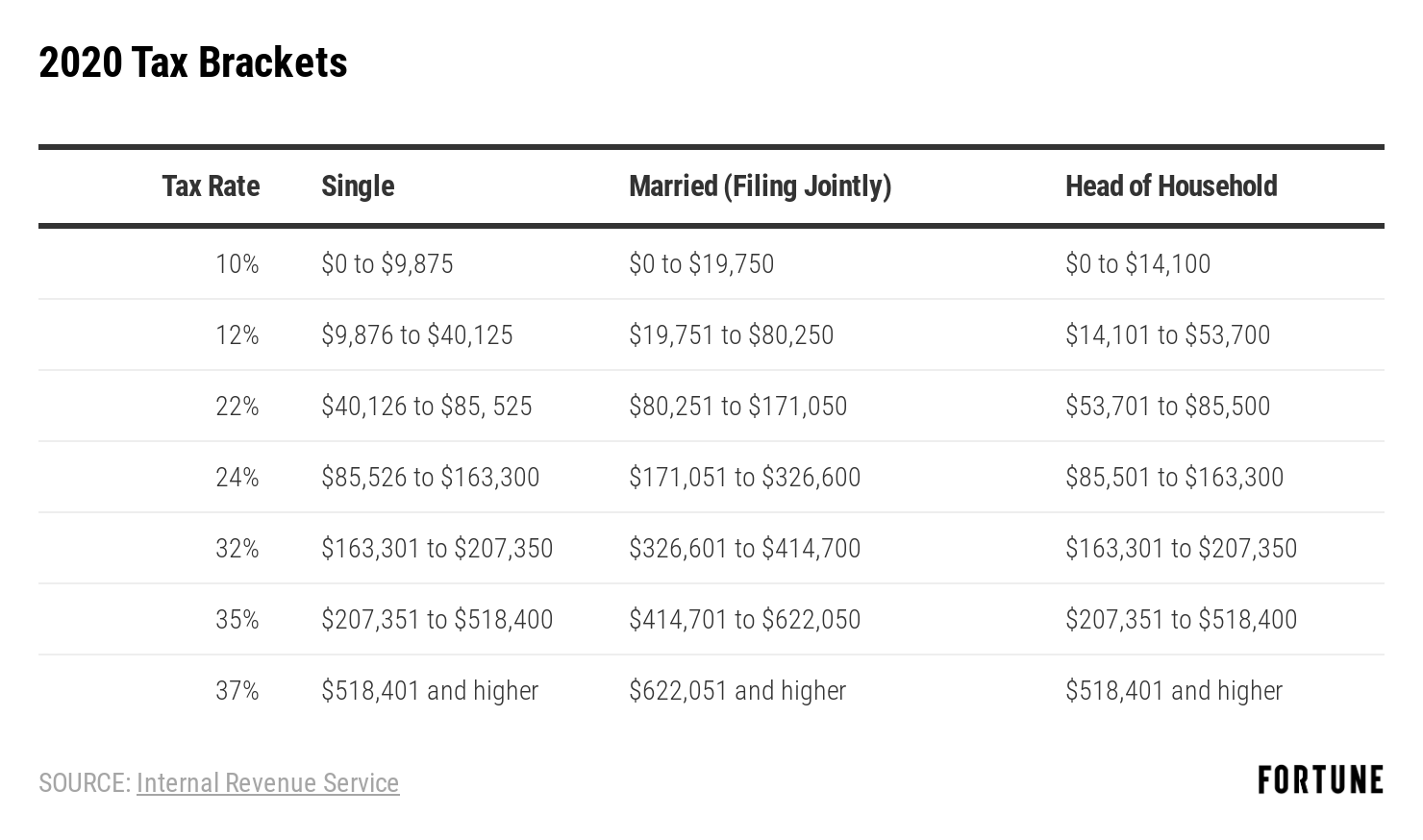
It's important to note that the tax rates on capital gains from the sale of stocks, bonds, cryptocurrency, real estate, and other capital assets, aren't necessarily the same as the tax rates mentioned above for wages, interest, retirement account withdrawals, and other "ordinary" income. That's a lot of money, but it's still $37,045 less than if the 37% rate were applied as a flat rate on the entire $1 million (which would result in a $370,000 tax bill). So, for example, the tax on $1 million for a single person in 2022 is $332,955. The rest is taxed at lower rates as described above. (We can all dream, right?) If you're single, only your 2022 income over $539,900 is taxed at the top rate (37%). (That's $6,164 less than if a flat 24% rate was applied to the entire $100,000.) When you add it all up, your total 2022 tax is only $17,836. That leaves only $10,925 of your taxable income (the amount over $89,075) that is taxed at the 24% rate, which comes to an additional $2,622 of tax. The next $31,500 of income (the amount from $10,276 to $41,775) is taxed at the 12% rate for an additional $3,780 of tax.Īfter that, the next $47,300 of your income (from $41,776 to $89,075) is taxed at the 22% rate for $10,406 of tax. Again, assuming you're single with $100,000 taxable income in 2022, the first $10,275 of your income is taxed at the 10% rate for $1,028 of tax.

The rest of your income is taxed at the 10%, 12%, and 22% rates. That's because using marginal tax rates, only a portion of your income is taxed at the 24% rate. Your tax will actually be less than that amount. Since $100,000 is in the 24% bracket for single filers, will your 2022 tax bill simply a flat 24% of $100,000 – or $24,000? Suppose you are single, and end up with $100,000 of taxable income in 2022. Wider tax brackets are a good thing, because they help to prevent "bracket creep." When a bracket gets wider, there's less of a chance that you'll end up in a higher tax bracket if your income stays the same or doesn't grow at the rate of inflation from one year to the next. So, from 2021 to 2022, the 22% bracket for single filers got $1,450 wider (i.e., $47,299 – $45,849 = $1,450).įor 2023, however, the width of the 22% singles bracket grew by more than twice as much. (Width is the amount of income taxed at the applicable rate – or in other words, the difference between the bracket's lowest dollar amount, and its highest dollar amount.)Īn example of this is the 22% bracket for single taxpayers. This shows up when we look at the "width" of the 2023 brackets and see that they got comparatively wider than before. Since inflation has been high over the past year or so, the inflation adjustments impacted tax brackets more this year than what most of us are used to. Inflation's Impact on the 2023 Brackets Married Couples Filing Separately and Head-of-Household Filers Tax Rate


 0 kommentar(er)
0 kommentar(er)
